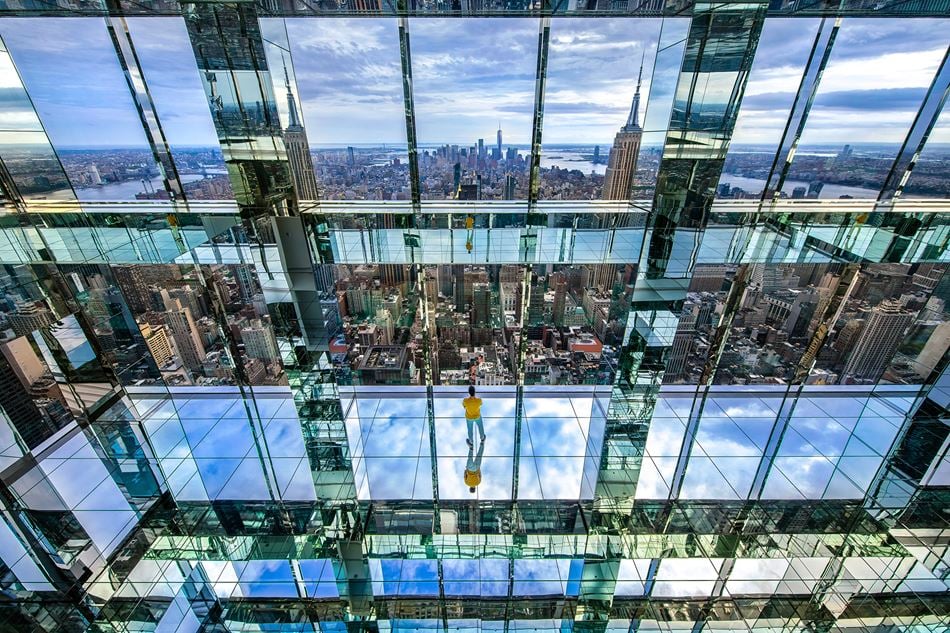 Jackie Wei Green
Americas Head of Communications,Los Angeles
Jackie Wei Green
Americas Head of Communications,Los Angeles
In collaboration with artist Kenzo Digital, Arup created the lighting and technical visualization for this unprecedented observation deck experience—a fully mirrored interior space at over 1,000 feet high creating an immersive illusion as if one is floating above New York City. Snøhetta served as Architect of Record, landscape architect, and designed the interior spaces and Arup provided the technical expertise to achieve this vision commissioned by the building owner SL Green.
SUMMIT One Vanderbilt is a sequence of experiences spanning four levels and totaling 65,000ft2, beginning below ground and rising to floors 91 through 93. Each is a distinct concept activated by lighting, sound, and visual effects. Arup designed custom digital lighting systems, such as those installed behind precision two-way mirrors that generate a variety of immersive and dynamic lighting sequences intertwined in the visitor experience. The highly tunable and digitally programmable lighting capabilities include detailed graphic effects of waves, gradients, shimmers, and shapes that make full use of the nighttime negative space created by the reflecting cityscape.
